 Several years into managing ingredient inflation, supply chain snags and other strains on your bottom line, you may feel like you have raised menu prices to their limit – or that you’re running out of ways to cut costs. But AI automation is helping operators identify new ways to optimize operations at the front and back of the house, saving resources in the process. In a recent webinar from QSRweb, “When Raising Prices Isn’t Cutting It...How AI Automation Cuts Costs & Customer Complaints,” panelists discussed how AI can accomplish this through precision forecasting on multiple levels at once. For example, it can forecast how the weather next week is likely to impact your guests’ food preferences, guest traffic, and therefore your inventory and labor needs. It can ensure you have the right ingredients on hand at the right time, so your team isn’t scrambling to refill a key ingredient on the line just as people are lining up out your door during the lunch rush. It can help operators manage around particular scenarios – like if Joe doesn’t make it to work today, how will we manage his tasks effectively and safely? It can prevent the unfortunate ripple effect that can lead to mistakes, safety problems, and inconsistency – all issues that can impact guest experience, as well as staff morale and turnover. This frees managers up to deliver better guest experiences, which AI can also enhance by delivering personalized information about the people coming through your doors. Looking at your current operation, where are the bottlenecks, or areas where you feel you could use staff more effectively or deliver a better experience for guests? Could precision forecasting help?  Restaurant technology has seen a flurry of change in the past several years as businesses have adapted to new revenue streams and ways of placing and paying for orders. Further, many restaurants have been adopting tech to manage multiple new streams of traffic and to ensure that consumers have the same brand experience across the board. If you adopted new tech tools in quick succession to manage evolving needs and challenges in your restaurant, it may be a good time to step back and assess how well your current configuration is working now, in addition to how well it suits your expected trajectory as a business. For example, has your guest traffic settled into a pattern as people have returned to offices or stepped away from them? Are your menu items generating the right response at the right times? Are you getting the information you need about your business in real time – and then making the necessary adjustments to staffing, menus, ordering and promotions as a result? Restaurant technology can be very helpful in collecting the information that you’re asking it to gather – but it’s also important to look beyond it and assess what information you may be missing. Planning ahead, does your tech need to change or evolve to help you take advantage of opportunities you’re missing right now?  Name a restaurant business challenge and there is a tech tool to help address it. As a result, it’s easy for restaurants that have the means to invest in new tech to drown in a sea of options. Adopting new tech to help manage staff schedules sounds useful. Yet so do inventory management systems, tech-based staff training and kitchen display systems. If you can’t do it all, focus on what’s going to help elevate your brand by asking one question: How will this improve the hospitality we deliver? At the recent FSTEC Conference, restaurant CEOs reinforced this message. Gregg Majewski, CEO of Craveworthy Brands, said he has seen far too many operators get distracted from that goal. “Hospitality is key,” he said. “It’s how you win guests, and it’s how you make your franchisees money.” 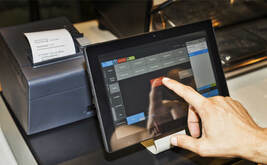 Investing in a POS that integrates with your business and supports its growth is a great place to start building a tech foundation for your restaurant. Just make sure any new system you’re considering meets some key criteria. As a recent article from pizzamarketplace.com advises, your technology provider must be a real partner, providing anytime support, development customized to your restaurant, and onsite training, for example. Get confirmation, not just lip service, that it can integrate seamlessly with all parts of your operation. It needs to be user-friendly, easy to learn and easy to fix if problems arise. It must also prioritize cybersecurity, take steps to protect your stored data and provide you with guidance on what to do when concerns arise. Finally, consider what you’re trying to achieve through the new system — and if (and when) it will deliver the return on investment you envision. 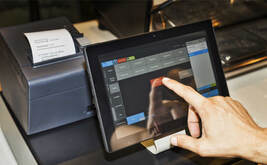 Restaurants need to invest in technology in order to compete, but the options can be dizzying – and available funds limited. Still, it’s important to regularly assess where your business could benefit from tech if and when you are able to invest in systems to help you scale. Start with your POS system. It’s the brain of your restaurant and needs to be able to connect seamlessly with all of your added tech for functions across your business to run smoothly. Are you using its full functionality? From there, look to your biggest pain points and labor burdens. Automated tools that help you manage your inventory, order streams and food prep are logical next places to build up from a solid POS.  We live in an age where businesses prize loyalty and are competing to get it from customers through loyalty programs. There are good reasons for it. These programs encourage repeat guests and boost a restaurant’s guest-retention rate. Retaining guests can mean the difference between thriving and going out of business: Harvard Business School research found that a 5 percent increase in customer retention rates can generate a 25-95 percent jump in profits. But delivering these programs is often imperfect. Guests are looking for a deal and may find loopholes in your program that enable them to reuse promo codes and repeatedly get food for significantly less than it’s worth. This is what happened recently for Mattenga’s, a family-owned chain of six pizza restaurants in Texas. As Enga Stanfield, the owner-operator, shared in an episode of her “Making Dough Show” on Youtube, a twice-weekly guest at their restaurant was able to take advantage of a loophole in their POS and use a promo code 19 times in different Mattenga’s locations over a short period. As a result, he was paying no more than a couple of dollars for each of his meals. Staff alerted Stanfield to the issue and she decided to “fire” the guest – a necessary step at times, even in a business built around pleasing customers. But she did it in a way that took ownership for the flaw in their system and also protected staff. She emailed the person and said they could no longer serve him. But she explained that the promo code issues were their fault – they were working on correcting them but could not afford a more advanced system at the moment. She went on to say that as a family-owned business, Mattenga’s cannot serve him and still afford to pay staff and cover other costs. She then explained, professionally, that she had instructed managers to refuse him service going forward, even if he pays full price, and that any of his friends or family who misuse the system will be refused service as well. If he comes into their restaurant and makes a scene, staff will call the police. It’s a situation you may encounter with guests who feel entitled – and how you handle it can impact profits, as well as the quality of your work environment. 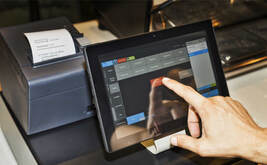 For many restaurants, the past few years have been a time of tech transformation. Restaurants that had the resources available to upgrade to modern POS systems and adopt other integrated technology in order to survive may not be looking to make additional significant investments in tech in the near future. Yet the landscape is always shifting and new tools are becoming available that promise to make business better and help operators work more efficiently. In a recent webcast with Nation’s Restaurant News, restaurant experts weighed in on some of the low-hanging fruit that operators can target if they’re looking to make incremental improvements. Some of the key suggestions included scheduling software (even something basic can improve employee flexibility and morale), software that aggregates online reviews and ensures you’re not leaving any unanswered ones dangling, and forecasting functionality that dovetails with your purchasing and ensures you’re minimizing waste where you can.  In the past few years, your restaurant has likely expanded the number of sales channels it offers to guests. Many full-service restaurants may have permanently ramped up their delivery and curbside pickup businesses, while quick-service restaurants may have made significant investment in their drive-thru business. But regardless of restaurant category, being able to deliver a consistent brand experience in every available ordering channel is critical – particularly if one channel seems to be getting more focus/investment/attention from guests than others. It starts by having a strong central nervous system in the form of a POS that streamlines all of these different business strands, makes it easy for staff and guests to process orders through them, and has functionality that allows the business to track and prioritize orders and other information in real time. Still, a recent report from Restaurant Technology News says many restaurant businesses are holding off on implementing such an all-in-one tech solution, largely because it might be too difficult for staff to learn in the midst of handling daily tasks and serving guests. However, it says, “utilizing these solutions can eliminate vendor fatigue for hospitality staff and free them up for higher-level activities…These solutions are giving them more time to prioritize, execute tasks, and delight guests, which ultimately increases efficiency and revenue for the business.” 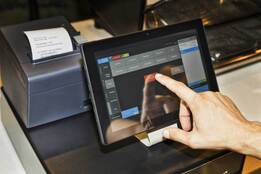 Despite the steep rise in restaurant technology that restaurants have adopted in the past two years, a majority of restaurants still have a long way to go when it comes to reaping sufficient benefits from it. According to a survey of 300 independent and small chain restaurant operators in August by Technomic (on behalf of SpotOn), while 56 percent of independent restaurants use technology to manage certain aspects of their business, 81 percent still rely on legacy POS systems. These systems are often incompatible with add-on software that can help a restaurant get a tighter handle on critical functions like cost management and staffing. They are also the nervous system of a business, so if they aren’t offering the functionality they could, any added tools will be limited in the value they provide. Before investing in any new software or tools, ensure you’re building from a cloud-based POS system that can grow with you – and more readily adapt to new technology as it becomes available.  Data has become increasingly valuable to restaurants, all while making foodservice businesses more appealing targets of cybercrime. According to Check Point Research, there was a 40 percent spike in cybercrime in the leisure and hospitality industry last year. Securing entry points is important to keeping information safe. A recent report from Modern Restaurant Management said legacy POS systems can be easy targets for attack. Taking action to bolster protection of every transaction at the point of sale is the most important thing you can do to safeguard your business from cyber criminals. That means having a POS with cloud-based monitoring and tech support. It helps an operator get to the root of a data breach or other problem quickly, then get back on track with minimal interruption. |
Subscribe to our newsletterArchives
July 2024
Categories
All
|


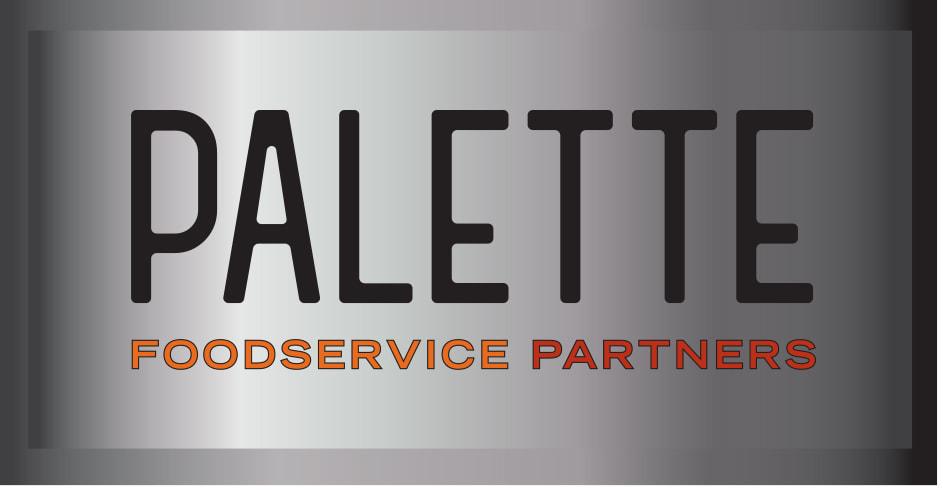
 RSS Feed
RSS Feed